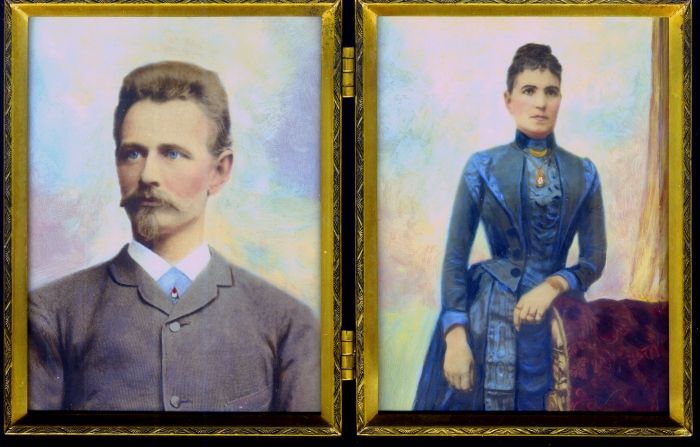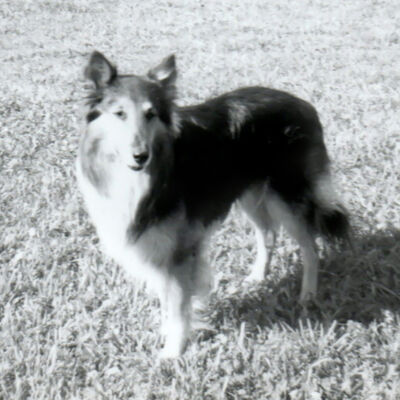Handcoloring Photographs
Jan 26, 2023 13:08:18 #
autofocus wrote:
Did it often years ago, using Marshall's Photo Oils. Had to use non resin coated b/w paper if I recall, it was great fun! And, you should know by now that getting respectful answers here is a bit of a stretch, sadly.
That's right.
Of course, you can colorize monochromatic images via computer. You can do that manually or by means of various online programs that do it automatically and color randomly with some kind of algorithm- not too bad!
Yes, hand coloring is an old process, however, if done expertly and correctly, has an entirely differet look. It is not entirely obsolete, that is if you know what you are doing and can acquire the necessary skills and materials. The result can be rather outstanding and very perminante.
The traditional process involved making a print on a high-quality warm tome (chloro-bromide) fiber-based paper with a textured surface and tonging it with sepia or brown toner. Some artists used a pre-color spray to provide a better "tooth" for the paints. The most popular materials were/are Marshalls Transparent Oils which are still available. These paints are not opaque so the original images come through and the colors are applied in various ways with brushes, cotton swabs, paper stomps, and cotton balls. The results depend on your skills. The current distributor of Marshalls Oils is:
https://www.dickblick.com/brands/marshalls/ They probably have books, tutorials, and instructions as well.
Here's the description: "Marshall's Photo Oils are transparent oil colors specifically designed for tinting black-and-white photographs by hand. Highly concentrated and interminable, they offer superior adhesion on photo paper. They're also acid-free and archival to ensure the long-term stability of your artwork".
The attached image has been in my wife's family since 1929. It was made by her grandfather who was a portrat photograher and colored by her aunt who was a photograher, colorist, and retoucher. It has a lovely subtle look. I still prefer that method for authentic photo restorations.
I can't imagine what is so funny about the older, traditional manual method. Many folks on this forum still shoot film, maintain darkrooms, do analog printing and use and collect old cameras and other gear. Why laugh at them or make fun of their questions?
Jan 26, 2023 13:24:33 #
E.L.. Shapiro wrote:
That's right. br br Of course, you can colorize m... (show quote)
No one has made fun just noted that the art is virtually dead.
Jan 26, 2023 13:47:49 #
Jan 26, 2023 13:54:02 #
E.L.. Shapiro wrote:
That's right. br br Of course, you can colorize m... (show quote)
...and it was somewhat forgiving. If you didn't like what you had done with a part you could wipe it off with a solvent and redo it. And it could be layered on to almost give it an oil painted look. You may remember, but many here will not that it was quite popular in the early 1900's, and photographer/artist Wallace Nutting made a business out of it.
Jan 26, 2023 14:07:49 #
Bushpilot wrote:
I used to hand color, and I'm pretty sure some still do with paints, dyes and pencils, but now I find doing it in Photoshop just as satisfying without the mess.
Here's is a fine example of how it's done today with one hand on mouse and one on keyboard:
https://www.youtube.com/watch?v=k5Y8YcKnRm0
Jan 26, 2023 14:24:02 #
autofocus wrote:
...and it was somewhat forgiving. If you didn't like what you had done with a part you could wipe it off with a solvent and redo it. And it could be layered on to almost give it an oil-painted look. You may remember, but many here will not that it was quite popular in the early 1900s, and photographer/artist Wallace Nutting made a business out of it.
In many portrat studios, It was popular right into the late 50s and early 60s. At that time "natural color prints were thought to eventually fade- many did in the short term. The clients who wanted larger color display portraits were offered the option of "hand-colored" images. In many cases, a skilled colorist could produce work that was more like a natural color portrait than a painting. Soeme more expereince artists would also use opaque or "heavy oils" to paint in the background or add more detail than things lkie bridal gowns. If the original print was fixed, hypo-eliminated, and washed properly, there was little or no chance of fadeing, and the selenium toner and to the archival process. When natural color prints because somewhat more "permanent" the demand for hand coloring began to diminish. The colorist who worked for many years in the studio I was associated with at the time, started a business of painting multicolored canvas portrait backgrounds.
I do not feel the craft is "dead" it is just a niche interest or skill and no longer widely commercially available as a "lab" or outsourced service. The must be a market because the supplies are still being produced and distributed.
As for the OP, if those paints are not dried-up, they may still be usable. Downsize if you like but please do not die anytime soon- that is totally depressing! I have plans for my old stuff- see the attached image!

Jan 26, 2023 20:44:51 #
OldSchool-WI
Loc: Brandon, Wisconsin 53919
DIRTY HARRY wrote:
Does anyone Handcolor Photographs any more?
_____________________________(reply)
This reply does not answer your topic question of where hand coloring is done, but some here might be interested in my family "hand colored miniatures" of work done in the 1880s of my Great Grandfather and Great Grandmother. I am not sure when the miniatures were made, though, but over seventy years at a minimum.-----------(attached)

Jan 26, 2023 20:51:20 #
OldSchool-WI
Loc: Brandon, Wisconsin 53919
E.L.. Shapiro wrote:
In many portrat studios, It was popular right into... (show quote)
___________________________(reply)
Good description of hand coloring, Autofocus, and the cartoon is hilarious to old timers.---------------ew
Jan 27, 2023 06:23:54 #
Yes I do on occasion. But then I only shoot film and print on paper in a traditional darkroom. A digital shooter would have no need to. Prints of prickly pear cactus blooms look beautiful when you color the big yellow flowers with the oil paint Made by Marshall’s. They are very popular with my friends and family. Not what I normally consider a fine art photograph but they are hanging in many homes. It is a relatively easy process but does require attention to detail just like everything else photographic.
Jan 27, 2023 06:36:03 #
Check on eBay. They have new kits but didn’t research if any private sales.
Also if you are on Nextdoor, list them there.
Also if you are on Nextdoor, list them there.
Jan 27, 2023 06:40:04 #
OldSchool-WI
Loc: Brandon, Wisconsin 53919
OldSchool-WI wrote:
_____________________________(reply)
This reply does not answer your topic question of where hand coloring is done, but some here might be interested in my family "hand colored miniatures" of work done in the 1880s of my Great Grandfather and Great Grandmother. I am not sure when the miniatures were made, though, but over seventy years at a minimum.-----------(attached)
This reply does not answer your topic question of where hand coloring is done, but some here might be interested in my family "hand colored miniatures" of work done in the 1880s of my Great Grandfather and Great Grandmother. I am not sure when the miniatures were made, though, but over seventy years at a minimum.-----------(attached)
_____________________________(reply to my attachment photo above of Great Grandparents)
The hand colored miniature was not on paper but ona white opaque photo cut film, more stable than paper.-----------------
Jan 27, 2023 08:19:48 #
MCHUGH
Loc: Jacksonville, Texas
I don't hand color any more but did a lot back in the 80's in my studio. Used Marshall oil paints and mat paper. Did lot of old photograph copies and restorations which was my main use of the coloring. You can still get the oils from any place that sells art painting supplies. Like most these days I do it on the computer and get just as good results and much quicker and less messy. I am sure you could get some info on U tube on how to do it.
Jan 27, 2023 08:30:43 #
Jan 27, 2023 08:58:45 #
StanMac
Loc: Tennessee
If the coloring materials are in decent shape, give them to a local “antique” shop for resale. Some “antique” stores sell old photographs so some buyer may want the colors to embellish an old photo.
Stan
Stan
Jan 27, 2023 09:39:50 #
Pix59
Loc: Ohio
DIRTY HARRY wrote:
Does anyone Handcolor Photographs any more?
Thank you for bringing back a memory of my Mom! My father was a photographer, back in the B&W days. He would develop the photos in our darkroom. My mother would oil paint the photos. She would have the person or family bring their clothing over so she could get the colors correct. Thanks for bringing back childhood memories! I know I didn’t answer your question, but wanted to thank you!
If you want to reply, then register here. Registration is free and your account is created instantly, so you can post right away.






